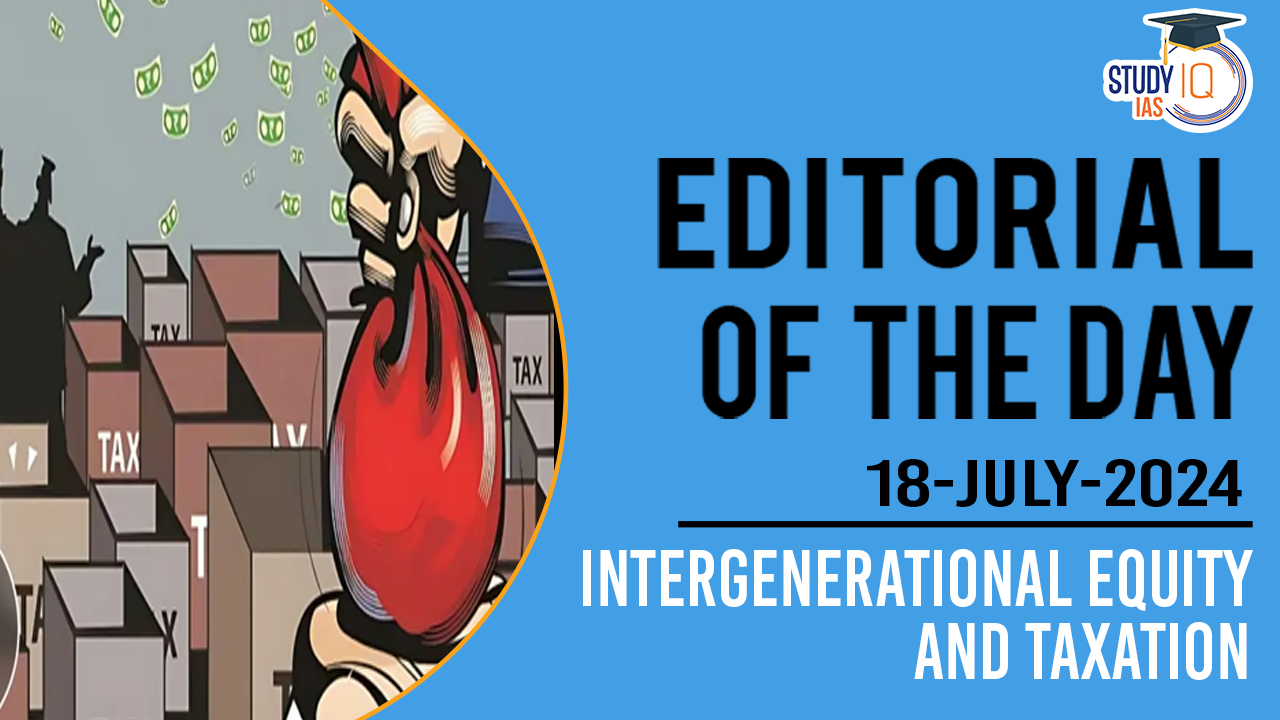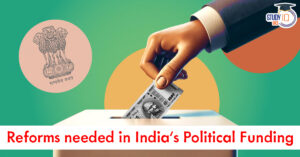Table of Contents
Context: Intergenerational equity should be a factor in India’s horizontal distribution formula for tax devolution.
Introduction
- The Finance Commission (FC) determines the horizontal distribution of Union tax revenue among States every five years.
- This distribution aims to prioritise equity over efficiency, focusing on intragenerational equity, which redistributes tax revenue among States.
- A consequence is the accentuation of intergenerational inequity within States.
- There is an argument for incorporating intergenerational equity into the distribution formula for tax devolution.
Intergenerational Fiscal Equity
- Intergenerational equity ensures equal opportunities and outcomes for every generation.
- In public finance, it means each generation pays for the public services it receives without burdening future generations through borrowing.
- Governments can raise revenue through taxes or borrowing. Using taxes ensures the current generation pays for its services, while borrowing shifts the burden to future generations.
- Ricardian Equivalence Theory posits that households save more when the government borrows, maintaining aggregate demand, but this doesn’t hold true in India’s federal system.
- Developed States often face a mismatch where their tax payments exceed the services they receive, compelling them to borrow more or reduce current expenditures.
- Developing States receive higher financial transfers from the Union government, bridging their revenue-expenditure gap.
Intragenerational Equity vs. Intergenerational Equity
- Low-income States finance less of their revenue expenditure with their own tax revenue and receive more Union financial transfers.
- High-income States finance more of their revenue expenditure with their own tax revenue but receive fewer Union financial transfers.
- High-income States incur higher deficits due to lower Union financial transfers compared to low-income States.
| Analysis and data from 14th FC period (2015-20) |
|
Conflicting Equities
- People expect public services proportional to the taxes they pay.
- High-income States are burdened with higher tax payments and lower Union financial transfers, affecting both present and future generations.
- Balancing intragenerational and intergenerational equity is crucial.
- FCs typically use indicators like per capita income, population, and area to determine distribution, ensuring equity but not efficiency.
- Equity variables (per capita income, population, area) assure equity but don’t reflect actual fiscal situations.
- Efficiency indicators (tax effort, fiscal discipline) carry less weight but should be emphasised to encourage fiscal efficiency.
Addressing Conflicting Equities
- Including more fiscal variables in the tax devolution criterion can better reflect the fiscal behaviour of States.
- States have Fiscal Responsibility Acts limiting deficit and public debt, but reduced Union financial transfers force some States to breach these limits.
- FCs should give more weight to fiscal indicators, incentivizing tax effort and expenditure efficiency to ensure intergenerational fiscal equity and sustainable debt management.


 Somaliland Explained: Location, History,...
Somaliland Explained: Location, History,...
 Signals from the Indian Economy: What Ke...
Signals from the Indian Economy: What Ke...
 Reforms Needed in India’s Political Fu...
Reforms Needed in India’s Political Fu...

























